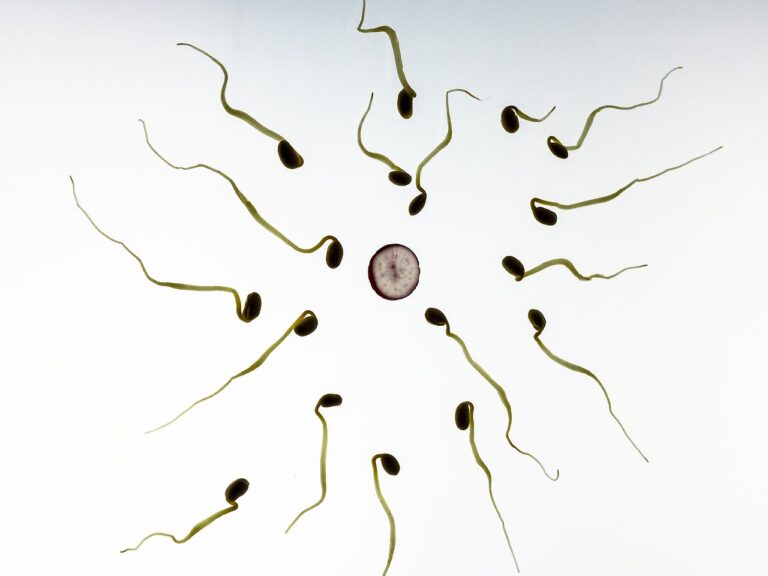During orgasm, men secrete a milk-like fluid called semen from the testicles and two glands near the prostate. Semen contains sperm and other fluids including calcium, protein, magnesium, citric acid, vitamin C and fructose sugar.
The amount of semen ejected varies, and it declines with age. However, men continue to produce sperm throughout their lives and some of these sperm are fertilized by an egg.
Volume
Men expel 1.5 to 5 milliliters, or up to half a teaspoon, of semen during a normal ejaculation, according to MedlinePlus. That may not sound like much, but it contains plenty of sperm: 20 million to 150 million little wrigglers.
The fluid that makes up semen comes from several sexual glands and organs: the seminal vesicles, prostate, testicles and epididymis. The lubricating fluid from the bulbourethral glands, also known as Cowper’s glands (after their developer, Sir William Cowper), is the final ingredient in the mix.
When the sperm-rich fluid exits the ejaculatory duct, it carries with it some other stuff: a bit of fat, some sugar and some acidic components such as lactic acid, which breaks down proteins. The sperm itself is the smallest part of the semen, making up just about 5% of its volume.
A low semen volume could indicate a problem with sperm concentration or motility, but it’s important to understand what the factors are that affect those factors before drawing conclusions about a patient’s fertility. Doctors can help by questioning patients about their abstinence period, collection methods and how often they feel they ejaculate. They can also assess whether the semen is thick or thin and check if it has a “line over C,” which indicates that 50% of the sperm is moving forward.
Concentration
Men may produce anywhere from two milliliters to five mililitres of semen each time they ejaculate. The concentration of sperm in an ejaculation is important because it indicates how many viable sperm are present and the ability of those sperm to fertilize an egg.
The concentration of sperm in semen is determined using a test called a hemocytometer, which counts the number of sperm cells within a small sample area. A normal sperm count is between 15 million and 200 million sperm per milliliter of semen. A lower sperm count, known as oligospermia, decreases your chances of getting pregnant. An absence of sperm in the semen, referred to as azoospermia, can indicate blockage of the seminal vesicles.
During the course of sexual stimulation, the sperm travels through the penis to the epididymis where it is pushed out of the body via ejaculation. The sperm can then enter the female reproductive tract, where it tries to fertilize an egg. Sperm can live for 74 days in the vagina, but only as long as they are able to reach an egg.
As sperm swim towards the egg, it must also be able to penetrate the cervix and then the uterus. Sperm motility is a measure of this ability, and the World Health Organization sets a standard of 40% motility as being normal.
Motility
During sex, sperm cells travel through the male reproductive system to the fallopian tube to fertilize an egg. To do this, they have to be able to “swim” through the cervix and uterus.
Specifically, to make this journey, sperm cells use flagella, which are microtubule-like structures that function similar to a cell’s cilia. Using flagella, sperm can move through the fluid of semen, pushing back and forth to propel themselves through the body’s reproductive tract.
While we know that sperm can swim, it isn’t always possible to tell how well the sperm are doing this from a sample of semen. This is because ejaculate volume can fluctuate during the course of a day, and as a result, the number of sperm in an ejaculate can change.
A more accurate way to determine how many sperm are in an ejaculate is by using a measure called total motile count (TMC). TMC gets around the problem of fluctuations in ejaculate volume by combining sperm concentration and sperm motility together.
To calculate the TMC, a lab will load about 5 mL of a man’s ejaculate into a small counting chamber. The chamber will then be agitated so that all of the sperm cells are liquefied, and a microscopic count will be taken. The count will then be divided by the ejaculate volume to give the percentage of motile sperm in the sample.
Morphology
As the name implies, sperm morphology refers to the shape of the little critters. During a semen analysis, the sperm cells are observed under a microscope and evaluated for their shape. While not a critical factor in fertility, it is still important to have normal sperm morphology in order for the sperm to be able to swim quickly and effectively towards an egg.
The sperm cells are released during a man’s ejaculation and are sent on an epic journey to fertilise an egg. The sperm must survive the acidic vaginal environment, swim through cervical mucus (feeling like swimming through treacle), and travel up the fallopian tube in order to reach an egg. Once there, the sperm must then be able to swim up against an egg’s protective outer layer.
Thankfully, it is very rare to have abnormal sperm morphology in men with normal fertility. In fact, it is considered abnormal if less than 4% of a man’s sperm meet the WHO’s strict morphology criteria. Even so, it is important to visit a fertility specialist and understand exactly how your sperm morphology may be affecting your ability to conceive. In many cases, a few minor changes to diet and lifestyle can help re-normalize these numbers. In other cases, intervention will be required. As a final note, it is also important to remember that a sperm morphology reading from a specialized fertility laboratory may not be comparable to a sperm morphology read at a hospital-based lab.
See Also:



